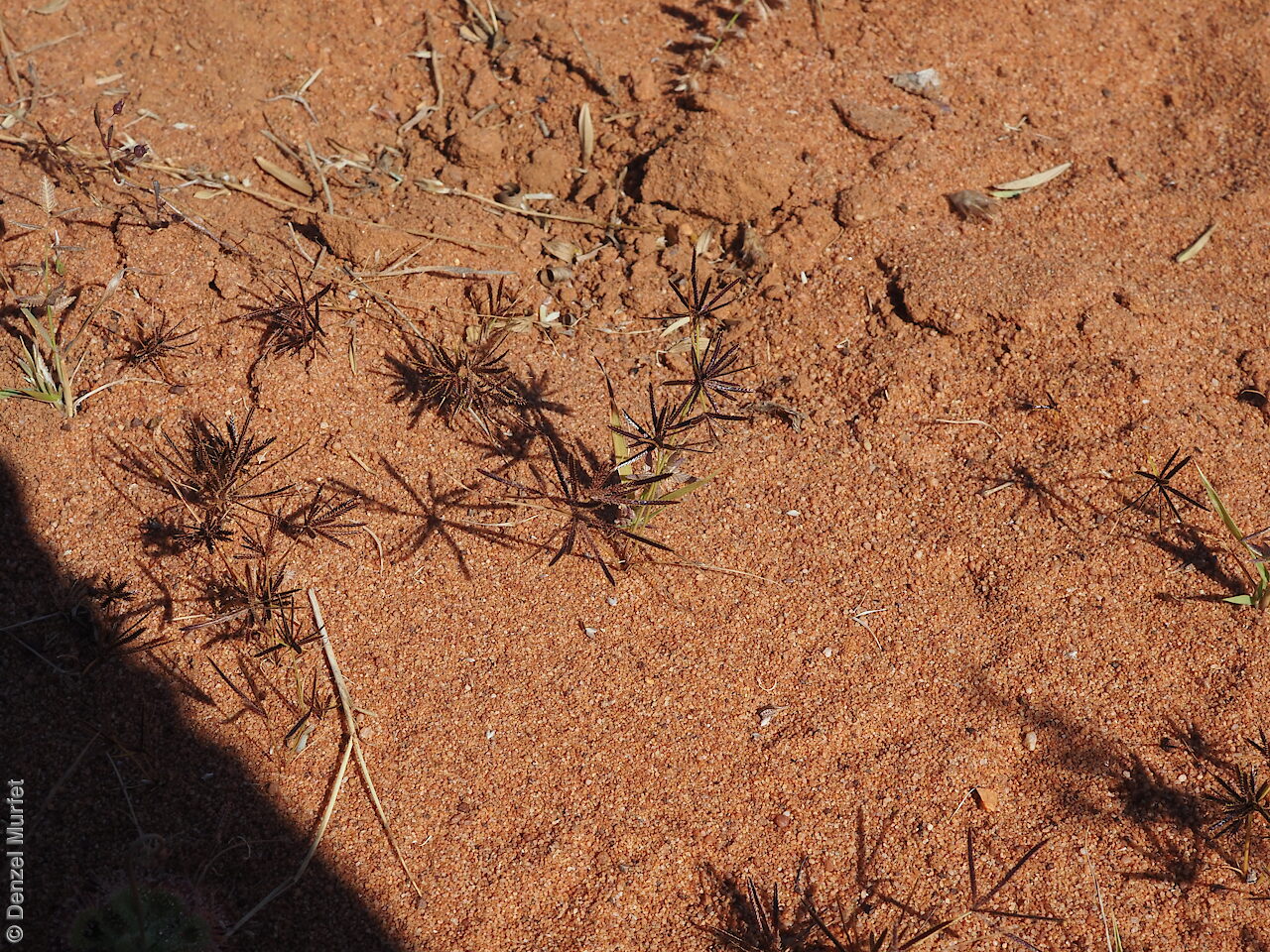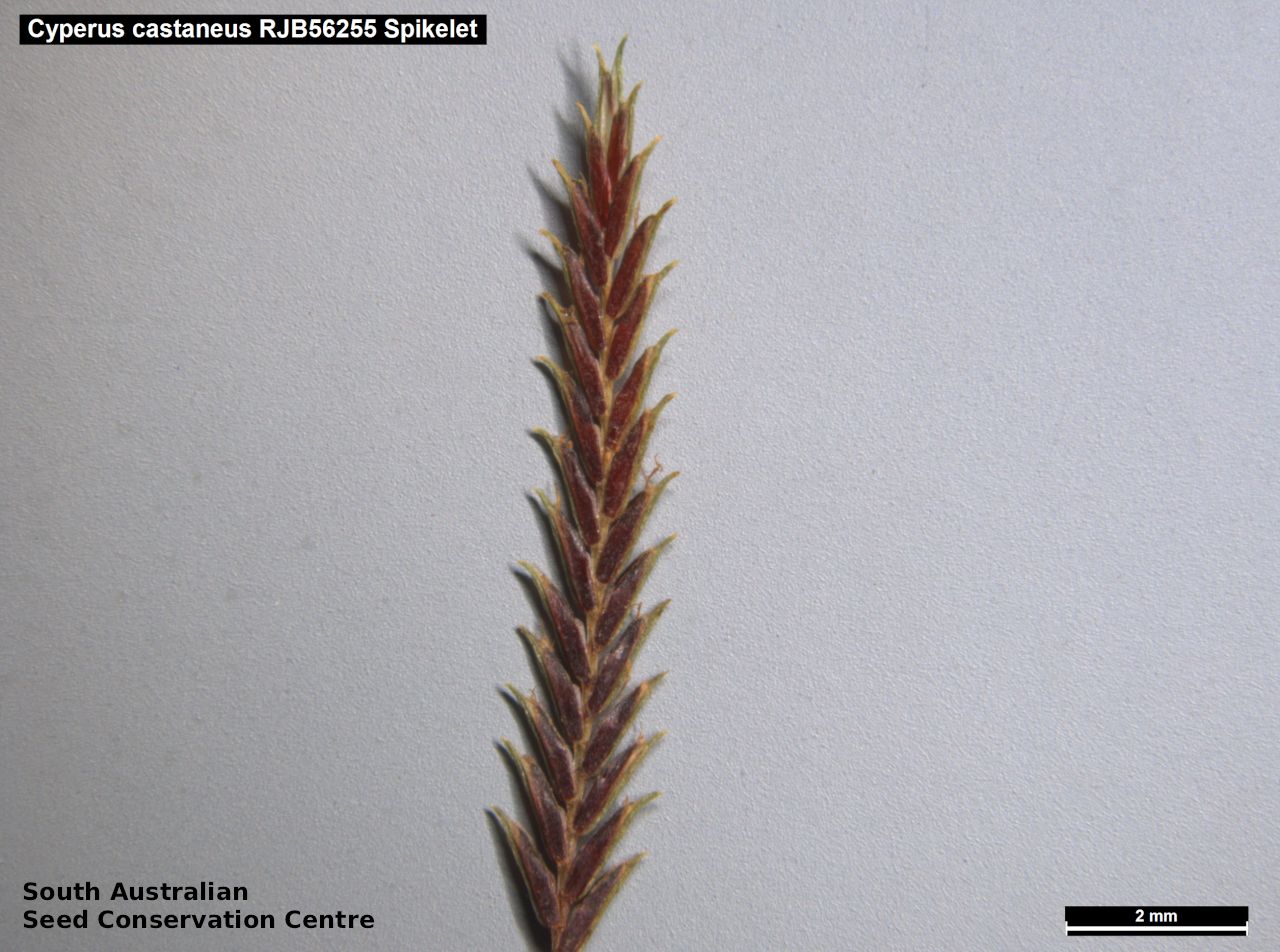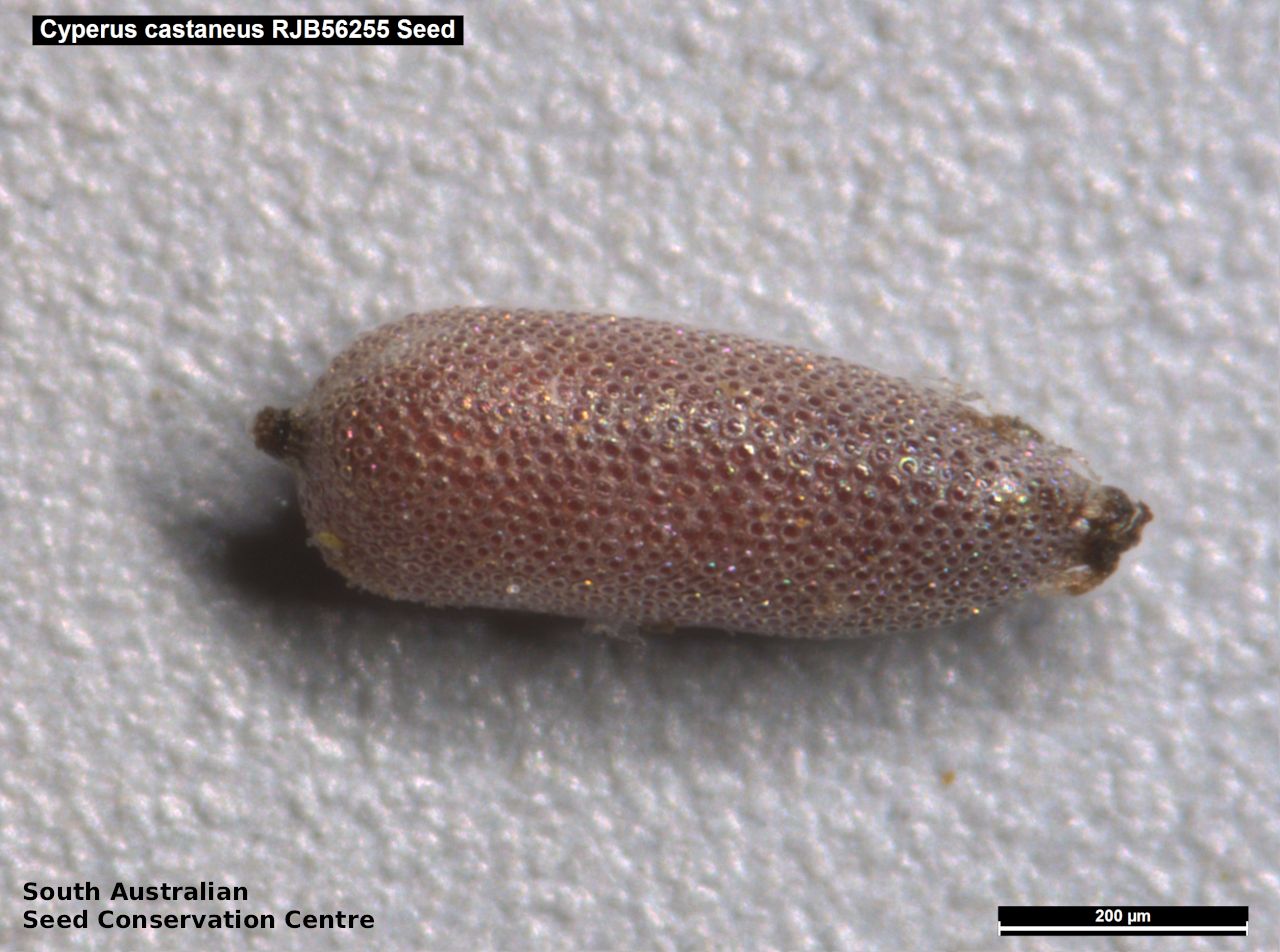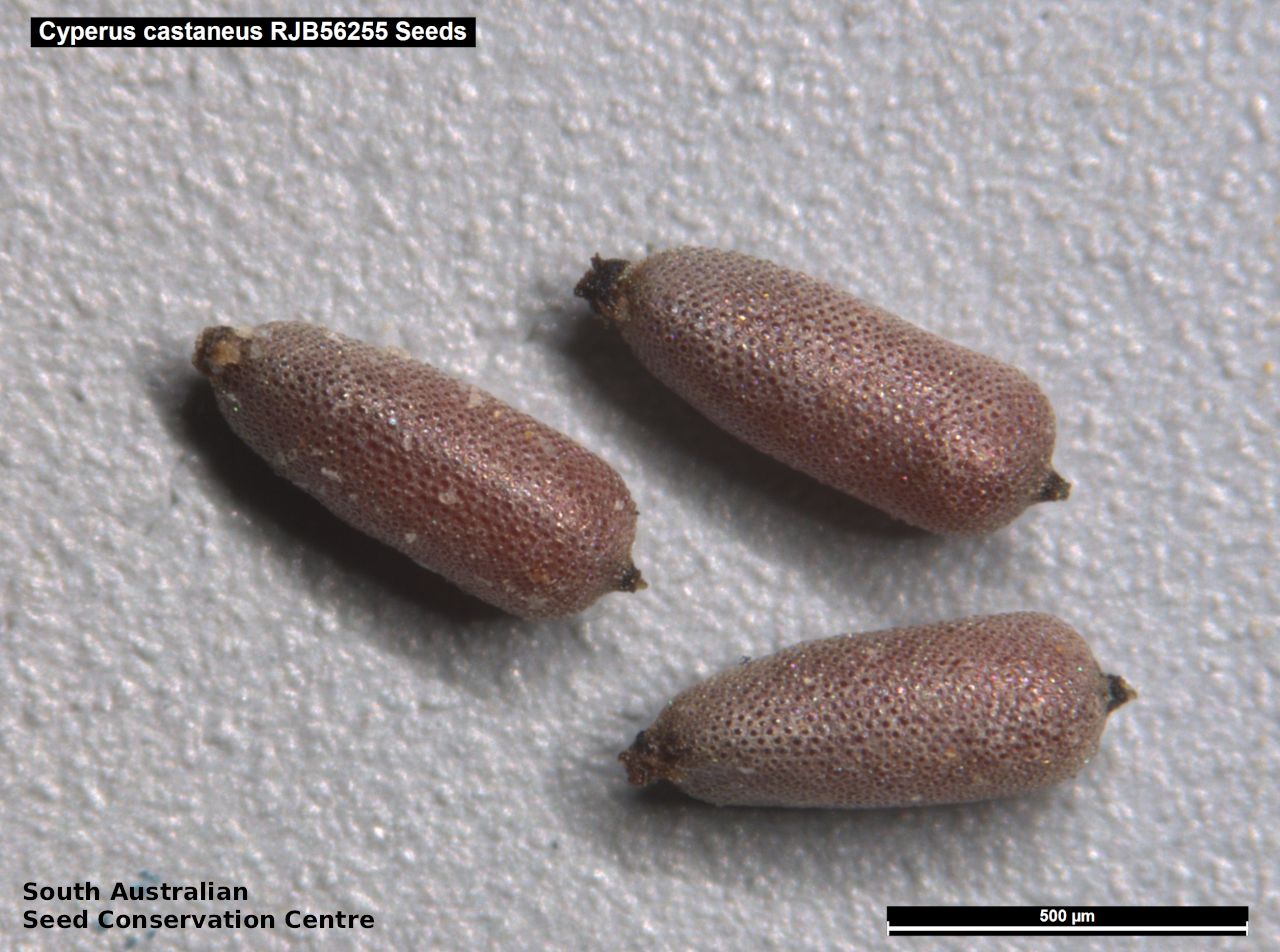








Common names
Chestnut Flat-sedge
Etymology
Cyperus from the Latin 'cyperos' and derived from the Greek 'kypeiros', an ancient Greek name used by Homer and Theophrastus for several plants of this genus. Castaneus is the Latin name for chestnut, referring tom the chestnut-colour of the glumes.
Distribution and status
Few records from the far northern part of South Australia growing in ephemerally wet areas such as claypans and wet depression on open sandy soils. Also found in Western Australia, Northern Territory, Queensland and New South Wales (and tropical Asia and Bangladesh, Myanmar, Sri Lanka, India and Nepal). Native. Rare in South Australia. Uncommon in New South Wales. Common in the other States.
Herbarium region: North Western
AVH map: SA distribution map (external link)
Plant description
Small tuft grass-like annual sedge 70 cm high. Culms trigonous, smooth to 10 cm high and 1 mm diameter. Leaves shorter than culms. Inflorescence simple with 1–4 branches to 3 cm long arranged in clusters to 15 mm diameter. Spikelets flattened to 20 mm long and 2 mm wide. Glumes emarginate, with sides 1-nerved near midrib, to 1.4 mm long and 0.8 mm wide, red-brown to very dark red-brown. Flowering between February and April as water subside. Fruits are red-brown fruit-head in spikey clusters at the tips of stems. Seeds are brown narrow ovoid seed to 0.7 mm long and 0.3 mm wide, covered with a thin shiny tuberculate transparent layer. Seed embryo type is capitate.
Seed collection and propagation
Collect fruits by picking off the mature heads, those turning red-brown colour and come-off easily. Place the heads in a tray and leave to dry for one to two weeks. Then rub the heads with a rubber bung to dislodge the seeds. Use a sieve to separate any unwanted material. Store the seeds with a desiccant such as dried silica beads or dry rice, in an air tight container in a cool and dry place.